Why you can trust TechRadar
We spend hours testing every product or service we review, so you can be sure you’re buying the best. Find out more about how we test.
GL-iNet Flint 3: 30-second review
The GL.iNet Flint 3 (GL-BE9300) is a tri-band Wi-Fi 7 router designed to deliver high-speed connectivity, advanced customisation, and excellent value for tech-savvy users. Built around a Qualcomm quad-core processor and equipped with five 2.5GbE ports, it’s tailored for homes or small offices that demand multi-gigabit wired and wireless performance.
Support for Wi-Fi 7 brings cutting-edge features like Multi-Link Operation (MLO), 320MHz channel width, and 4096-QAM modulation. These technologies dramatically improve speed, reduce latency, and enhance reliability across multiple devices.
The Flint 3 offers theoretical wireless speeds of up to 9300 Mbps across its 2.4GHz, 5GHz, and 6GHz bands, making it ideal for streaming 4K/8K content, gaming, and heavy file transfers.
As I saw previously on other GL.iNet routers, this one uses OpenWRT-based firmware, which allows users to install over 5,000 plug-ins for deep network customisation. This includes advanced VPN support with WireGuard and OpenVPN-DCO, AdGuard Home for ad blocking and parental controls, and multi-WAN failover for uninterrupted connectivity. It also supports mesh networking, making it scalable for larger homes. Support for link aggregation up to 10Gbps adds further flexibility for NAS setups or high-throughput local networks.
However, to fully exploit its Wi-Fi 7 capabilities, users will need compatible client devices—such as laptops with Intel’s BE200 module or smartphones with Qualcomm FastConnect 7800. Without these, the router defaults to Wi-Fi 6/6E speeds, which are still fast but don’t unlock the full potential of the hardware. The Flint 3 is best suited for power users, tech enthusiasts, and professionals who want granular control over their network, or who are early adopters of Wi-Fi 7 devices. It’s also a compelling option for small businesses or remote workers who need reliable VPN throughput and multi-gigabit wired access.
While it’s not the most powerful router in terms of raw CPU performance, its Qualcomm chip is slightly less capable than the MediaTek processor found in the Flint 2; this design compensates with broader wireless support and more versatile Ethernet options. At around £156 in the UK or $189 in the US, it undercuts most Wi-Fi 7 competitors, offering a feature-rich package at a mid-range price. For users who value flexibility, privacy, and future-proofing, the Flint 3 is a wise investment that blends open-source control with next-gen wireless performance and is easily one of the best Wi-Fi routers available.
GL-iNet Flint 3: price and availability
- How much does it cost? $190/£157/204 Euro
- When is it out? Available now
- Where can you get it? You can get it directly from GL-iNet, and it is also available from Amazon shortly.
Direct from GL-iNet, the GL-iNet Flint 3 costs only $189.90, and are currently offering $5 off your first purchase. GL-iNet is also doing a deal where they bundle it with the Slate 7 travel router for just $339.80. In the UK, it sells for £156.70 direct from the maker, and it’s 203.37 Euros across Europe.
At the time of writing, it has yet to appear on Amazon, but it should be available through that and other retail channels shortly.
The two obvious competitors are the TP-Link B550 and the Netgear RS100, these being priced at roughly $200 and $130, respectively. The TP-Link B550 offers the most robust hardware with full 2.5GbE LAN/WAN, USB 3.0, and strong tri-band performance. Ideal for users seeking plug-and-play power and mesh capabilities. The extra cost of that router might be worth paying if you want Mesh operability with other hardware.
The Netgear RS100 is cheaper, but it is only dual-band with no 6GHz range, is only BE3600 rated, and only has a single 2.5GbE WAN port that is then distributed over four 1GbE LAN ports.
The asking price for the full-featured GL-iNet Flint 3 makes it a remarkably attractive choice for those wanting to use Wi-Fi 7.
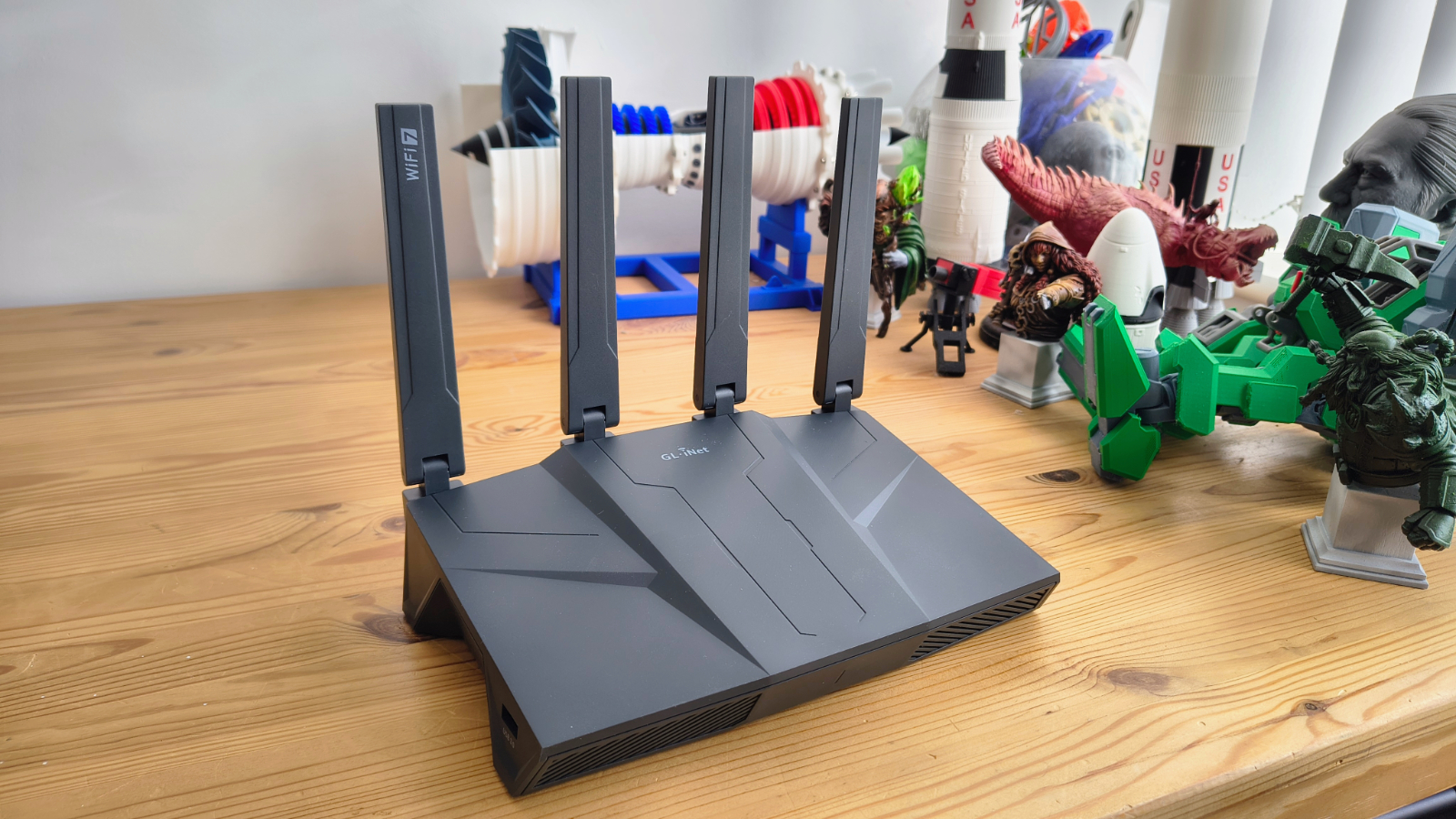
GL-iNet Flint 3: Specs
Feature | Specification |
|---|---|
Model | GL-BE9300 (Flint 3) |
CPU | Qualcomm Quad-core @1.5GHz |
RAM | 1GB DDR4 |
Storage | 8GB eMMC |
Wi-Fi Bands | Tri-band Wi-Fi 7: |
Wi-Fi Standard | IEEE 802.11a/b/g/n/ac/ax/be (Wi-Fi 7) |
Ethernet Ports | 5 × 2.5GbE: |
USB Port | 1 × USB 3.0 |
Antennas | 4 × Foldable External Antennas |
Operating System | OpenWRT 23.05 (customised) |
VPN Support | WireGuard & OpenVPN-DCO (up to 680 Mbps) |
Additional Features | AdGuard Home, Parental Controls, Multi-WAN Failover, Mesh, MLO (Multi-Link Operation) |
Power Input | DC5521, 12V/4A (5.5 × 2.1mm) |
Power Consumption | |
Dimensions | 240 × 157 × 74 mm |
Weight | 848g |
GL-iNet Flint 3: design
- Simple construction
- Single USB ports
- Five 2.5GbE LAN/WAN ports
The designers of this router went with the landed patrol spacecraft aesthetic, rather than the full-blown spiders-from-mars motif that others appear to love.
It’s a stealth angled wedge with all the antenna arranged along the rear edge. The antennas only rotate in a single axis, but this allows for wall-mounting or placement on a shelf/table.
The only feature on the front is a small activity LED, and two large air grills to allow for cooling the internal components. The sides and the whole underside have more vents, and the single USB 3.0 port is on the left-hand corner.
Those expecting WiFi disabling buttons or WPS will be disappointed as neither of these options is physically present.
The back of this router is super-simple, with five 2.5GbE Ethernet ports, with one of them being coloured blue to indicate that it’s meant for WAN use. There is also a reset button and the power inlet, rounding out the physical controls.
If you haven’t got the hint yet, all the controls that you might typically expect are configurable through the web interface. Therefore, most aren’t entirely missing; they’re just accessible only to those who have the authority.
One aside that needs to be mentioned is that because all the LAN/WAN ports are the 2.5GbE specification, it is possible to channel bond them to support a combined 10GbE link.
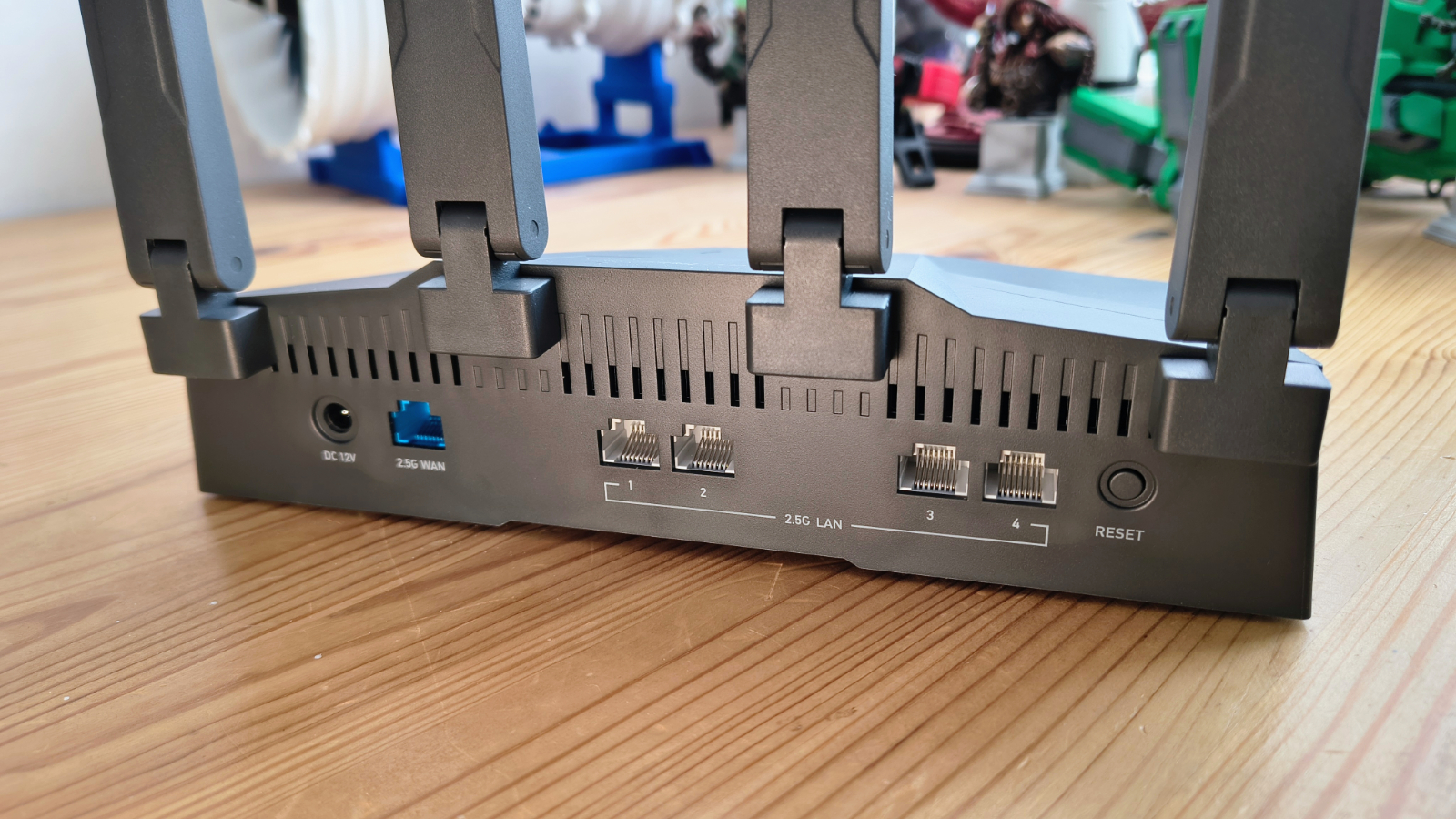
But possibly even more useful is that one of the four 2.5GbE ports marked as LAN can be set to be a second WAN port. That offers the possibility of a failover or even a bonded connection across two broadband services.
That’s not something you see often on a router that costs less than $200, and might attract anyone running a small business that needs the Internet to do business.
Overall, the GL-iNet Flint 3 is a well-made router. The plastic construction appears to be durable enough for office use, with critical features located on the web-accessible interface rather than the hardware itself.
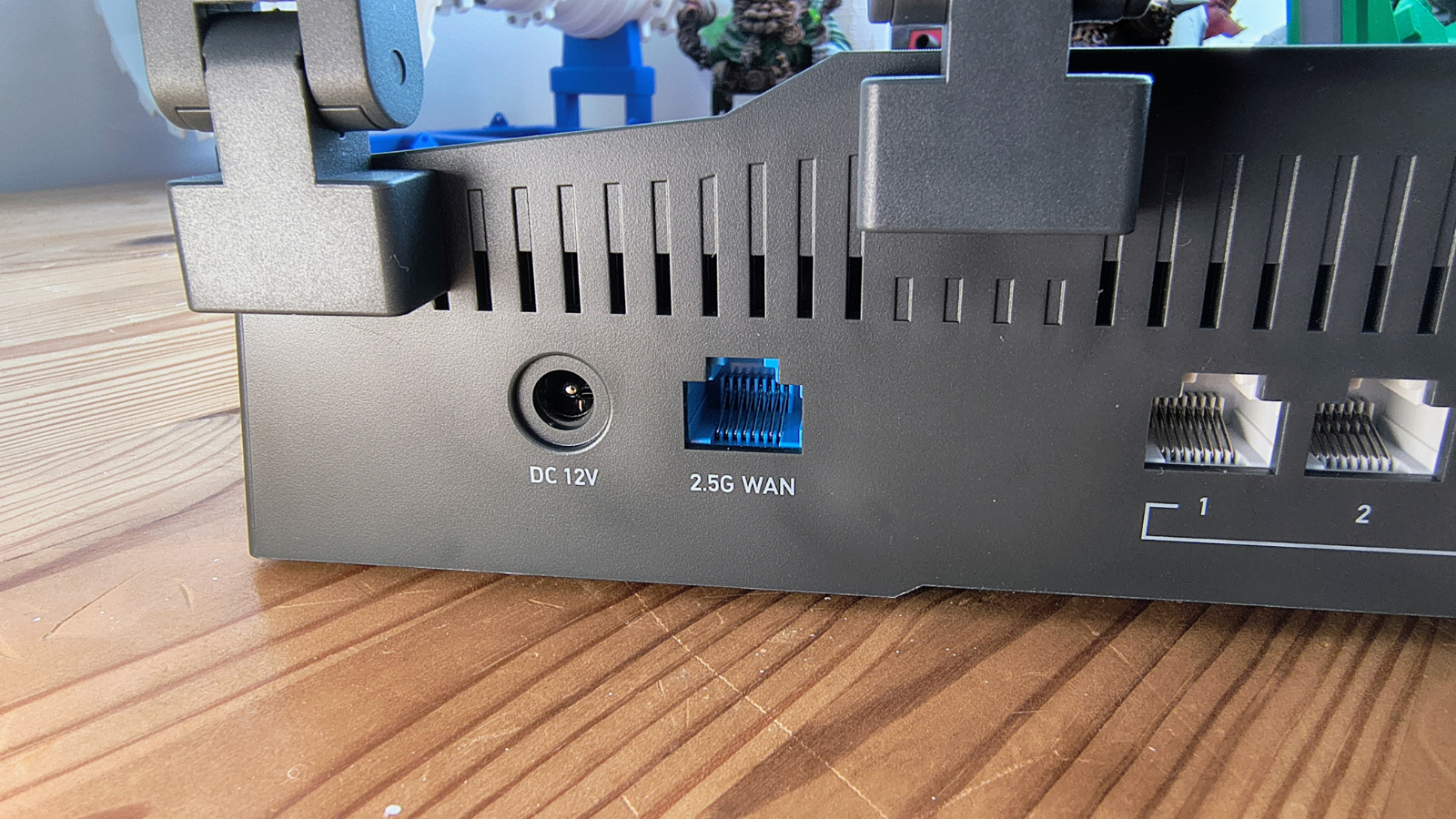
Design score: 4/5
GL-iNet Flint 3: In use
- OpenWRT
- Less powerful than the Flint 2
- Only one USB port
Like the Puli AX, this router is built on a customised version of OpenWRT, a Linux project for embedded devices. This tailored version of OpenWRT 23.05 with support for over 5,000 plug-ins makes it ideal for advanced users who want granular control over routing, VPNs, and network behaviour.
And, the VPN and Privacy components include WireGuard and OpenVPN-DCO support, AdGuard Home, failover, load balancing, and Mesh networking.
However, what I found slightly disconcerting was that the spec of this router, other than its support for Wi-Fi 7, is in many respects worse than the Flint 2 that preceded it.
The Flint 2 used a MediaTek Quad-core CPU running at 2.0 GHz, and delivered 1148Mbps on 2.4GHz and 4804Mbps on 5GHz. Whereas the Flint 3 has been downgraded to a 1.5GHz Qualcomm Quad-core, you only get 688Mbps from 2.4GHz, and 2882Mbps from 5GHz, and all the eggs are in the 5765 Mbps 6GHz basket. We’ll talk later about why this might not be an ideal choice.
But what really made me wonder about the Flint 3 was that the Flint 2 offered a maximum speed using WireGuard of 900Mbps, but the SoC on the Flint 3 is only rated to 680Mbps.
That would make Flint 2 a better proposition for those who need a VPN, and also have mostly Wi-Fi 6 clients.
For someone coming new to this party, getting the router operational is relatively straightforward. Simply connect it to power, log in to the Wi-Fi network it creates using the password printed on the underside, and then access the web interface. Alternatively, GL-iNet offers a phone application for remote router configuration.
At some point, it’s probably a good idea to connect it to the internet, so you can get the latest firmware that includes the most recent fixes and extras.
OpenWRT is both the best thing about this router, through its extensibility, but also a little annoying on occasion.
As an example, the router has four possible modes that include being the default Router, Access Point, Extender and WDS. But, and this is a bugbear, if you select Access Point or WDS then you can’t use a PC to access the router over the wired network using the web GUI. You can configure it using the phone app, but that’s not ideal.
I also noticed that it has an ‘Auto’ mode for channel allocation that isn’t exceptionally brilliant at finding the unused channel space.
Those points aside, compared to many of the cheaper routers, the functionality in this one is impressive. I was especially impressed by the way that the LAN ports can be used with the ability to run two of them as WAN, enabling a failover mode.
This router also supports GL-iNet GoodCloud and Astrowarp, enabling multiple routers to be remotely controlled, either via remote SSH or remote web access.
There are a few places other than the SoC that GL-iNet drops the ball on this router, the first of those being the single USB port.
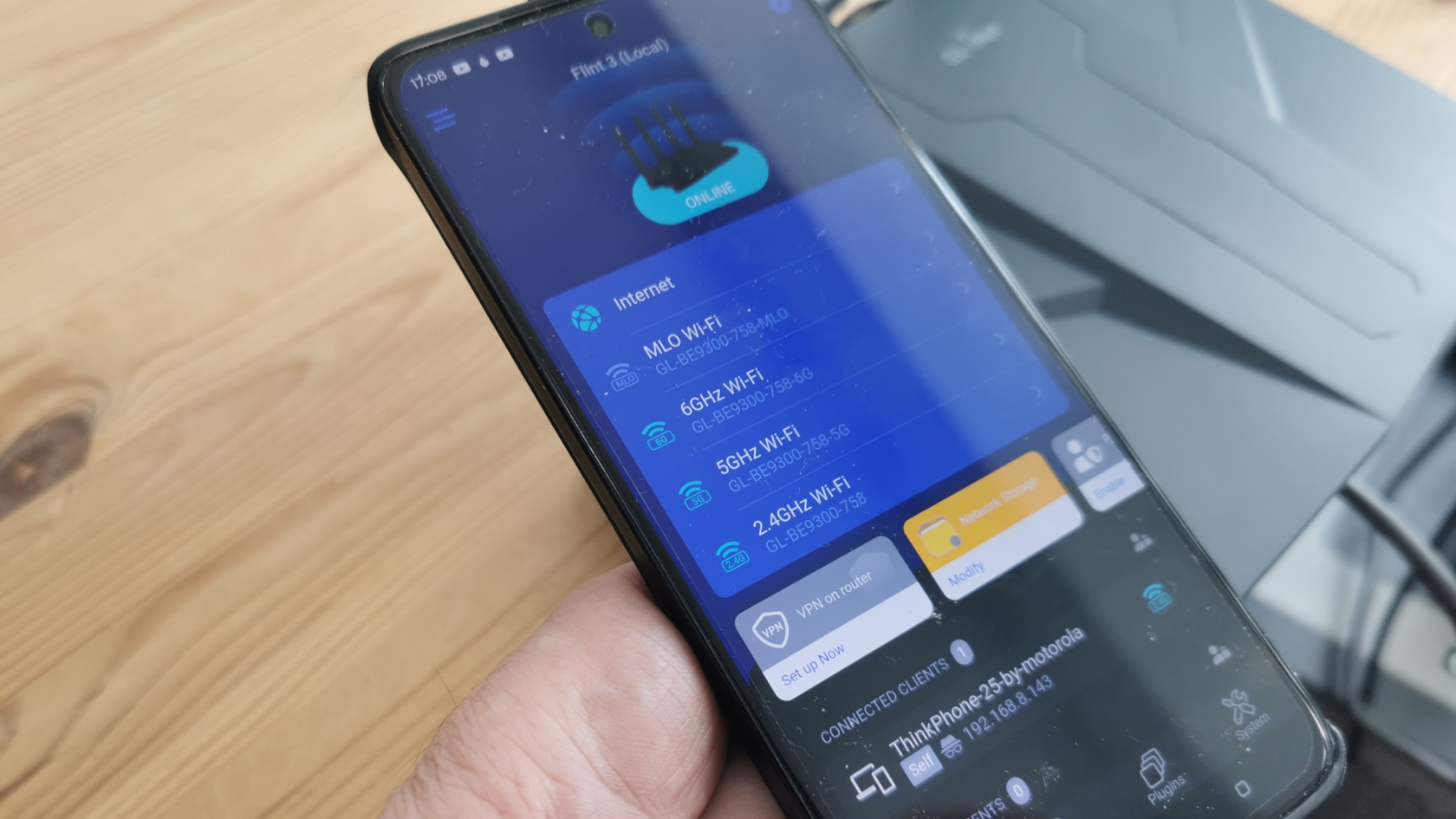
I tried this port with several USB-connected storage devices, and some of the higher power-demanding ones it didn’t recognise. Being pragmatic, a cheap NAS is a much superior option for this type of requirement, but it appears that the power management and possibly the SoC in this router aren’t ideal for it to take on the role of a storage server.
My other issue is more problematic because lots of people use Mesh networking to allow a seamless transition for wireless network devices throughout a building.
Disturbingly, the word “Mesh” appears to be missing from all the documentation regarding this router. And, while it can be used in a repeater mode, I couldn’t find anywhere to set it up as a node or master Mesh controller. This might be addressed by a future upgrade to OpenWRT, but at this time, the Flint 3 isn’t well-positioned for those who use Mesh technology in their network.
One area that gets more of a thumbs-up is the support for VPN operations, as it’s remarkably easy to create a VPN client or server on this router with just a few clicks.
However, as I’ve already mentioned, the performance is capped at 680Mbps by the router’s SoC.
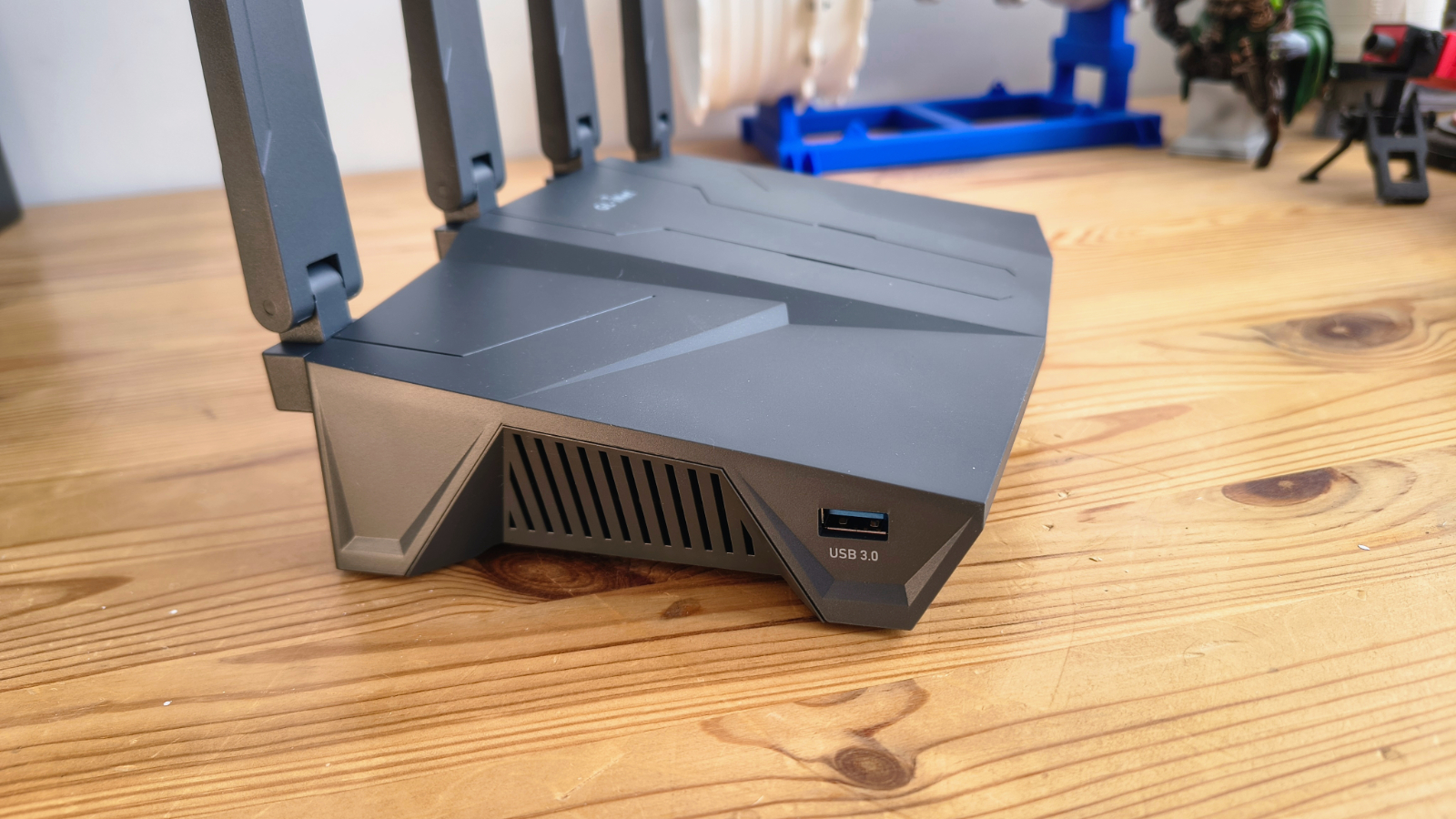
GL-iNet Flint 3: performance
- 6GHz biased
- Needs Wi-Fi 7 clients
In simple terms, BE9300 is a label used to describe a Wi-Fi 7 router that offers a combined wireless bandwidth of around 9300 Mbps across its three frequency bands: 2.4GHz, 5GHz, and 6GHz. Approximate total bandwidth (574 Mbps on 2.4GHz + 2880 Mbps on 5GHz + 5760 Mbps on 6GHz ≈ 9300 Mbps)
It’s a marketing shorthand to help users compare routers at a glance. Just remember: the actual speed you get depends on your devices, distance, and network conditions.
But the biggest issue by far in getting high performance from this router, and any other Wi-Fi 7 specification device, is Multi-Link Operation (MLO).
This enables a client device to connect using multiple channels simultaneously, boosting the total bandwidth available to previously unimaginable levels.
This technology allows simultaneous data transmission across multiple bands—2.4GHz, 5GHz, and 6GHz. This can result in lower latency, improved reliability, and better load balancing. However, to truly exploit these features, client devices must also support Wi-Fi 7.
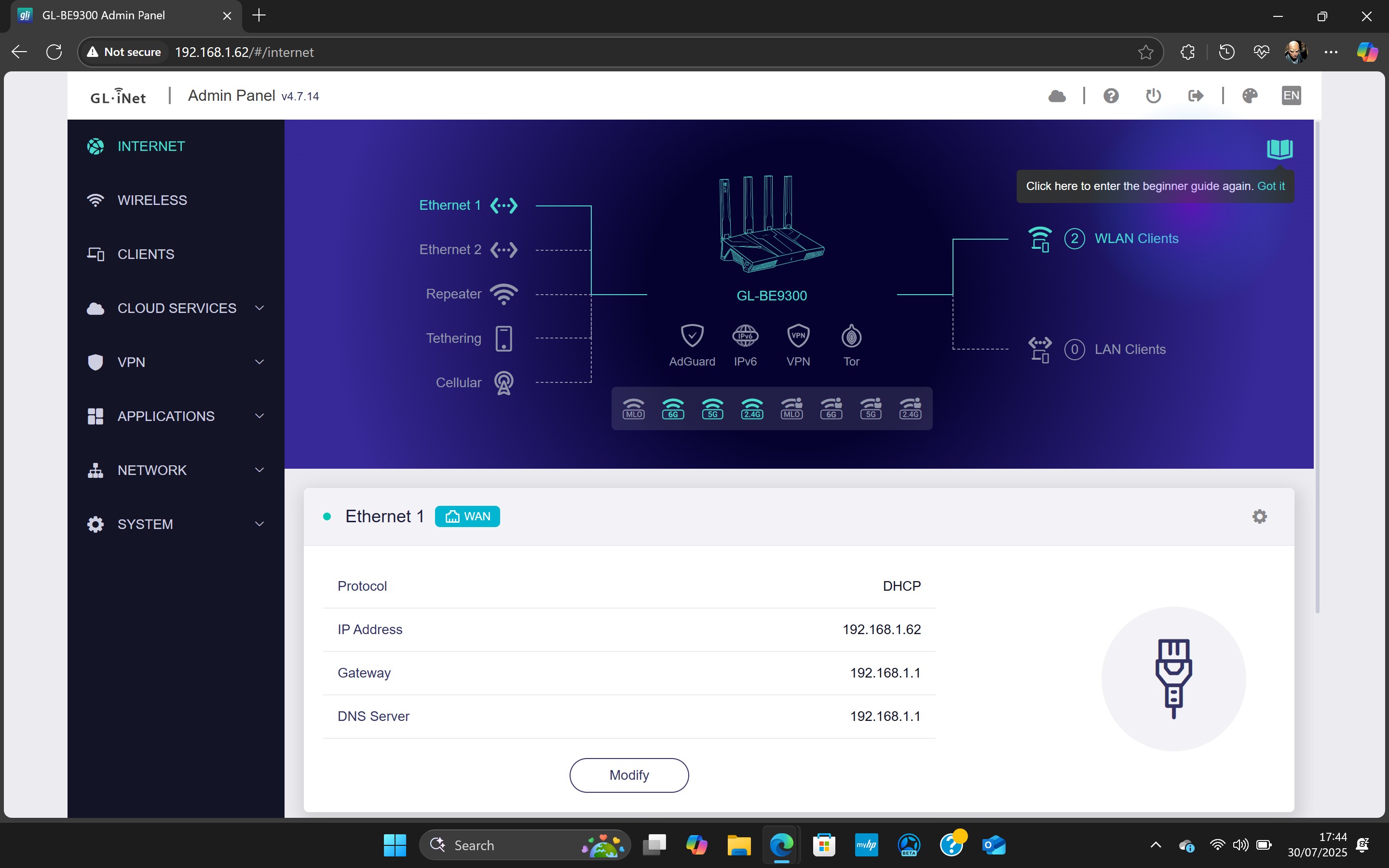
I tested it using an HP EliteBook that has the BE201 Wi-Fi 7 chip that can facilitate the frequency hoping gymnastics needed to grab all the bandwidth.
My experience was that with MLO turned on, wireless performance was generally strong, but subject to odd network quirks—such as MLO parsing errors and TCP retransmissions—suggest. This activity hints that the software stack is still maturing, and it needs some tweaking.
This was in stark contrast to the operations with MLO disabled, where at short range the 6GHz delivered 1441 Mbps without any fluctuation. With MLO on, it can wildly fluctuate between as low as 250mbps to a fantastic 5760 Mbps, briefly.
It was more reliable with hardware acceleration disabled on the router, but there is an issue with this and how it relates to the Flint 2 it replaces.
Because most of the bandwidth is focused on 6GHz, and that frequency isn’t renowned for its ability to penetrate building structures, it’s highly likely that if the majority of the time you aren’t in the same room, the extra bandwidth on 2.4GHz and 5GHz on the Flint 2 might give you overall better performance.
I don’t have the Flint 2 here to test that hypothesis, but I have my suspicions.
On paper, the Flint 3 looks terrific, but unless you have Wi-Fi 7 adapters on all your equipment, and you have an open-plan office, its superior performance might be mostly theoretical.

GL-iNet Flint 3: Final verdict
Given the price and specs, I really wanted to like this router, but it never quite lived up to its billing. I’m hoping that with a few additional updates, the performance will stabilise and the Mesh situation will be clarified.
This might not address the curious choice to give this router a lower-performance SoC than the Flint 2, but it could fix the issues that are going to irritate customers the most.
Therefore, while it might not be an instant purchase for some, it has the potential to become highly popular if GL-iNet manages to straighten out a few slightly wonky things in this design.
Should I buy a GL-iNet Flint 3?
Attributes | Notes | Rating |
|---|---|---|
Value | A crazy price for WiFi 7 | 4/5 |
Design | Simple design with five 2.5GbE LAN ports | 4/5 |
In Use | Feature rich, but not complete. | 3.5/5 |
Performance | Biased to 6GHz makes for rollercoaster performance | 3.5/5 |
Overall | A few odd choices undermined what might have been a classic | 4/5 |
Buy it if…
Don’t buy it if…
For more connectivity solutions, we’ve reviewed the best business routers

